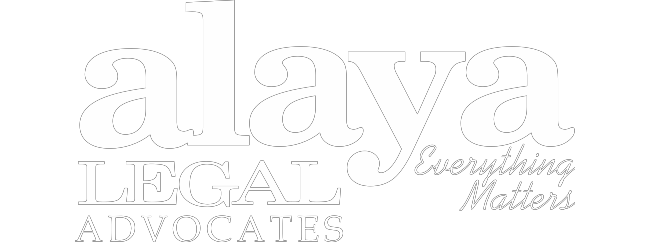For a better and more comprehensive understanding of the Compliance Mechanism discussed in this write-up, readers are strongly recommended to refer to our previous article on the Carbon Credits Trading Scheme, 2023. Adherence to the provisions of the Carbon Credits Trading Scheme, 2023, and compliance with them require expert legal assistance.
Introduction
The Indian Carbon Market (ICM) was established to facilitate India’s Nationally Determined Contributions (NDCs) under the Paris Agreement, 2015. The ICM aims to mobilize finance and technology to meet these targets. The entire ICM framework has been put in place pursuant to provisions of the Energy Conservation Act, 2001 and the Environment (Protection) Act, 1986. The Carbon Credit Trading Scheme, 2023 (CCTS) was notified by the Central Government pursuant to powers under Section 14(w) of the Energy Conservation Act, 2001. Under the CCTS, The Bureau of Energy Efficiency (BEE) has issued the ‘Detailed Procedure for Compliance Mechanism under the CCTS’ (DPCM) specifying the procedures for compliance with the CCTS by ‘obligated entities’.
Under the said Compliance Mechanism:
- The Ministry of Environment, Forest and Climate Change (MoEFCC) shall set the targets in tons of CO2 equivalent (TCO2e) per unit of equivalent product for the obligated entities.
- Each obligated entity shall receive an annual target for a trajectory period of three years, being revised after the period ends.
- For each compliance cycle, each obligated entity must comply with its assigned GHG emission intensity targets.
- While entities that exceed their targets shall earn Carbon Credit Certificates (CCC) based on the difference between the target achieved and the targeted emission intensity, whereas entities that fail to meet their emission intensity targets shall purchase CCC to comply with the relevant compliance cycle.
For the purposes of measuring and managing the impact of the activities on the climate by companies, sectors and nations, GHG emission intensity targets have emerged as an important tool. As opposed to absolute emissions, intensity emission targets are focussed on emissions per unit of output or productivity, allowing for a nuanced view with respect to emissions and also adapting to the evolving circumstances.
This write-up discusses the associated steps in the calculation and notification of ‘GHG Emission Intensity Trajectory and Targets’ under the Detailed Procedure for Compliance Mechanism under the Carbon Credit Trading Scheme, 2023.
Absolute targets or Intensity Targets?
Four key factors need to be considered when one evaluates GHG emission targets:
- Whether the target is absolute or based on the intensity. While absolute targets consider total emission, intensity targets are calculated based on the emissions per unit of the output.
- The stringency of the targets- whether the targets being set out are practical or too ambitious.
- The scope of the targets, whether they apply to a specific company, a specific sector or are applicable on a national scale.
- Whether the targets being set out are voluntary or are legally binding and the incentives being offered to meet the specified targets.
There are several advantages of adopting intensity targets as opposed to absolute targets. Intensity targets provide flexibility to evolving growth and business conditions. For a company looking to expand, it would be tougher to meet an absolute target whereas intensity targets shall evolve with the expansion of the company. The efficiency associated with the output is also factored into when it comes to intensity targets.
However, when one looks at the flip side, there are certain challenges associated with intensity targets. For an expanding company, the absolute emissions may still increase with a decrease in the emissions intensity. Therefore, emission intensity targets may provide the scope to increase absolute emissions as long as there is improvement in the efficiency. Despite this, as nations across the globe grapple with climate change, intensity targets shall continue to play a crucial role in reducing GHG emissions.
While absolute reduction targets are very ambitious and may seem ideal, from a practical perspective, they can be very uniform. Given that every company operates within a distinct set of circumstances, the ability to reduce ‘absolute’ emissions may vary. The costs and practical feasibility of such absolute reduction is dependent on factors like the industry, sector and the supply chain, thereby creating obstacles in having attainable absolute targets for all.
Especially, in the case of a country like India, there have been continuous increases in absolute emissions over the years due to the rapid economic growth. For a country that has made significant investments to support its increased levels of production, absolute emissions would not factor in this growth.
GHG Emission Intensity Trajectory and Targets
Under the CCTS, the Central Government shall determine the obligated under the CCTS compliance mechanism upon the recommendation of the National Steering Committee for ICM (NSCICM). The greenhouse gases to be covered under the compliance mechanism under CCTS are carbon dioxide (CO2) and perfluorocarbon (PFCs) gases from the obligated entities’ operations.
GHG emissions shall be converted to CO2e based on Global Warming Potential (GWP) for the greenhouse gases (as specified in the latest assessment report by Intergovernmental Panel on Climate Change (IPCC). The GWP values for different gases are provided in Annexure I.
The BEE shall, in consultation with the technical committee, develop the sectoral GHG emission trajectory for each sector until 2030. The BEE will regularly review and update the emission trajectory.
The GHG emission intensity trajectory will be developed based on:
(i) India’s NDCs.
(ii) Potential for fuel switch, use of non-fossil fuel energy/feedstock and decarbonisation in the sector.
(iii) available technology and associated cost of their implementation.
The trajectory period will be three years and the targets will be given annually, which must be complied by the obligated entity.
The technical committee set up by the BEE shall set out the GHG emission intensity targets and calculate the GHG emission intensity in the baseline year and the targets of GHG emissions intensity for the trajectory period covering direct energy, process (non-energy), and indirect energy-related emissions.
Calculating Emissions
The GHG emissions from the obligated entity’s establishment shall be calculated considering the following:
(i) Identifying all possible GHG emission sources and source streams resulting in emissions within the boundary of obligated entity.
(ii) GHG emission sources shall cover emissions from energy use and emissions from processes.
(iii) Consider all forms of GHG emission source stream from energy use that is solid fuel, liquid fuel, gaseous fuel, purchased electricity, purchased heat, or any other form of energy imported within the boundary of obligated entity for consumption as energy for production.
(iv) Consider all forms of process related GHG emissions resulting from chemical reaction between substances or transformation during the production process within the boundary of the obligated entity.
(v) Calculate the total GHG emissions by adding GHG emissions from different source streams and converting into a single GHG emissions unit, namely, tonnes of carbon dioxide equivalent using the formulas as specified in the Annexure III.
(vi) Where applicable, the entities where intermediate products/raw material are imported within the plant boundary of the obligated entity, notional emissions shall be added to the GHG emission and emission intensity calculation to ensure consistency across different entities within the same sector/subsector and this shall be specified in the monitoring and reporting guidelines for the sectors.
The DPCM, however, does not include certain GHG emissions for the purposes of the calculation of total GHG emissions:
(i) GHG emissions from biomass or biogenic sources of energy
(ii) Energy from renewable energy
(iii) GHG emissions resulting from co-processing of alternate fuel such as hazardous waste or other waste in manufacturing process as per the latest guidelines or rules by the Central or State Pollution Control Board. However, such fuels shall be recommended by the respective technical committee for the consideration of NSC-ICM. Fuel such as Petroleum coke, Carbon Black, Petro Polymer Fuel, Peat and Dolochar shall not be considered as alternate fuels.
(iv) GHG emissions if captured, transferred, or utilised by the obligated entity through carbon capture, storage, and utilisation technology.
(v) GHG emissions resulting from energy consumed in the colony attached to the obligated entity, temporary or major construction work, and for outside transportation, as these emissions will not be resulting from the production process.
(vi) GHG emissions from refrigerant leakages in office buildings and processes. The default emission factors (Type I) depending on type of fuel and materials will be applied for the first trajectory period. For the subsequent trajectory period, the emissions shall be based on actual emission factors (Type II) for fuel and material.
(vii) GHG emissions resulting from captive energy production (electricity and heat) which is exported out of the boundary of obligated entity.
(viii) Any other emissions sources or source streams as proposed by the technical committee and recommended by the National Steering Committee for Indian Carbon Market.
While at a first glance, it may seem counterintuitive to exclude the above emissions, however, these exclusions are still a pragmatic step in the direction of balancing concerns relating to economic growth and sustainability. By providing for such exclusions, the Central Government continues to support innovation, energy security and economic growth which shall provide the foundation for a more comprehensive and stringent GHG accounting in the future.
Production Calculation: The main product or an equivalent product from the product mix, in accordance with the Energy Conservation Rules, 2012 shall be considered. In case the production of the main product stops, the obligated entity must inform the BEE. Annexure II lists the products or outputs for relevant sectors.
Baseline Year: The GHG emissions for the baseline year shall be calculated based on data submitted by the obligated entity to the BEE. The accredited carbon verification agency shall verify the data.
Report: The technical committee shall prepare a report on the emission intensity targets of the obligated entity and submit it to the BEE.
Examination: The BEE shall examine the report and submit its finalized recommendations on GHG emissions intensity targets for each obligated entity to the NSCICM working group.
Ministry Recommendations: After considering the recommendations made by BEE and NSCICM, the Ministry of Power will suggest the GHG emission intensity targets to MoEFCC for the purpose of notification under the Environment Protection Act, 1986.
Notification: After considering the recommendations, the MoEFCC shall notify the annual GHG emission intensity target for each obligated entity for the trajectory period.
View Point
Emissions intensity targets remain an essential tool in the fight against climate change. When set at sufficiently stringent levels, they can drive meaningful emissions reductions while providing companies the flexibility to adapt and grow. The key is to use intensity targets as part of a broader emissions reduction strategy, including absolute targets and other measures.
The ICM represents a significant step towards integrating market-based solutions into environmental governance. Within the CCTS framework, the ICM should emerge as an efficient and transparent system geared towards reducing GHG emissions significantly. By integrating carbon credits in the corporate sectors (perhaps through CSR initiatives), the government can evolve a vibrant market that will drive sustainable growth while mitigating climate change. This integration includes providing incentives for early adopters and ensuring that the market is accessible to smaller entities, promoting widespread compliance and maximizing the market’s potential for reducing greenhouse gas emissions.
Additionally, regular reviews of the compliance framework are essential to adapt to technological advancements and changing economic conditions, ensuring that the system remains practical and relevant.
If you are interested in related topics or need more information or support, reach out to our legal firm in NCR, which has expertise in transactions, documentation, and compliance with environmental laws and regulations. Our team of environmental lawyers would be happy to assist you in addressing your specific requirements relating to carbon credit trading and related compliances. Please feel free to contact us for more information on how our legal firm in NCR can help.



























